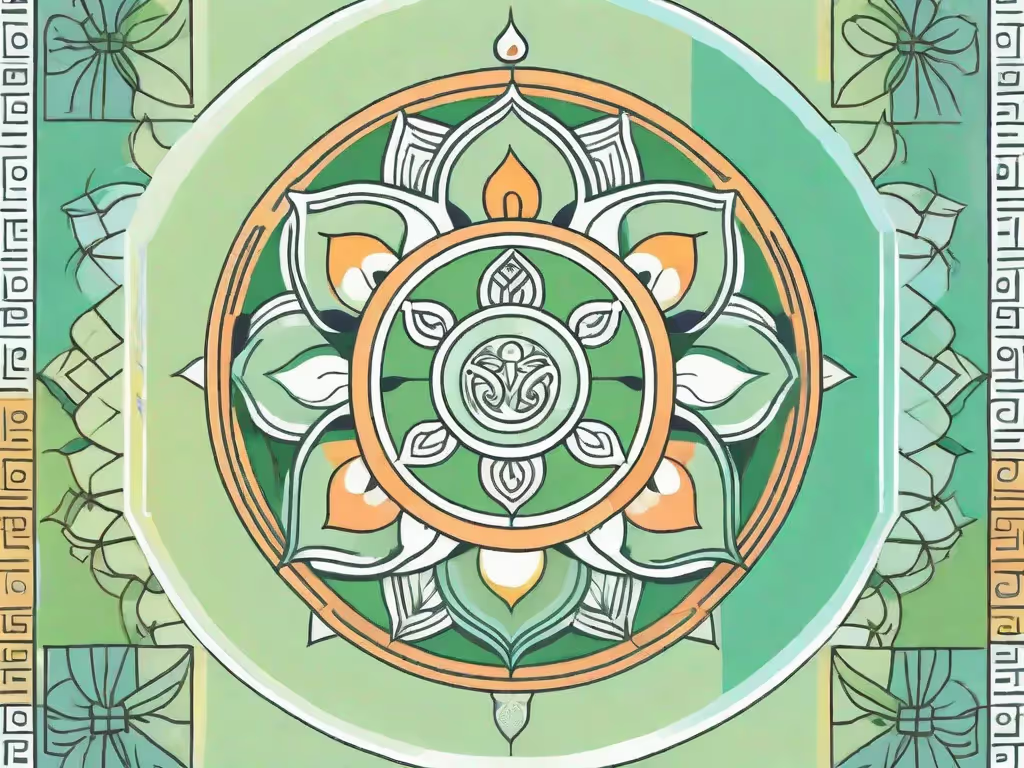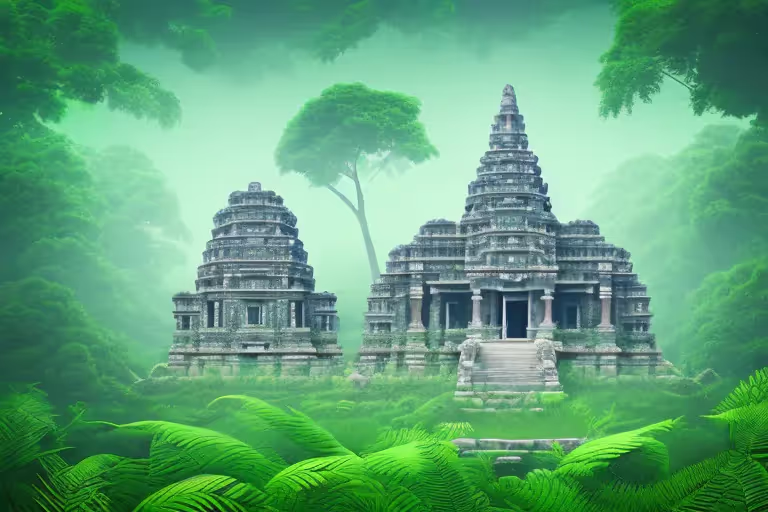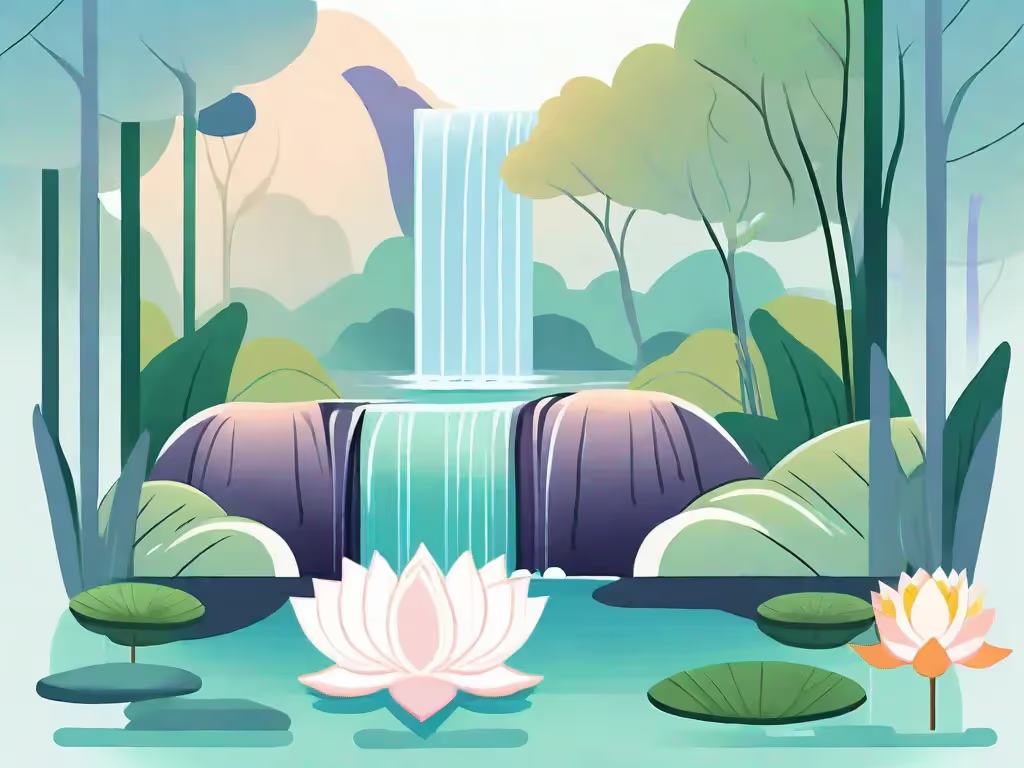Meditation dance is a unique practice that has its roots in the ancient teachings of Buddhism. This captivating form of expression combines the elements of meditation, movement, and rhythm to create a harmonious experience for practitioners. Throughout this article, we will delve into the world of meditation dance in Buddhism, exploring its concept, origins, spiritual significance, techniques, impact on practitioners, and global influence.
Understanding the Concept of Meditation Dance
At its core, meditation dance is a mindful and embodied practice that allows individuals to connect with their inner selves and the world around them through movement. While traditional forms of meditation often involve sitting in stillness, meditation dance adds a dynamic element to the practice. It is a beautiful way to merge the physical body with the spiritual realm, creating a state of deep concentration and awareness.
Meditation dance encourages individuals to explore the depths of their being through graceful and intentional movements. It is a form of self-expression that goes beyond words, allowing practitioners to tap into their emotions and connect with their authentic selves. Through this practice, individuals can cultivate a sense of inner peace, balance, and harmony.
The dance itself is not limited to any specific style or technique. It can incorporate elements from various dance forms, such as ballet, contemporary, or traditional cultural dances. The key is to move with intention and mindfulness, allowing the body to become a vessel for spiritual exploration.
The Origins of Meditation Dance in Buddhism
Meditation dance finds its roots in the rich cultural and spiritual heritage of Buddhism. In the early days of the Buddhist tradition, monks and nuns would engage in ceremonial dances as a way to enhance their meditation practice and express their devotion to the teachings. These dances were often performed in sacred spaces, such as temples or monasteries, and were passed down from generation to generation.
The practice of meditation dance in Buddhism is deeply intertwined with the concept of mindfulness. By incorporating movement into their meditation practice, Buddhist practitioners sought to deepen their awareness of the present moment and cultivate a sense of interconnectedness with all beings. The dances were not merely physical exercises but rather a form of moving meditation, allowing individuals to transcend the boundaries of the self and connect with the divine.
Over time, meditation dance evolved and spread beyond the confines of Buddhist monasteries. It became a practice embraced by people from different cultures and spiritual backgrounds, each adding their own unique flavor to the dance form.
The Spiritual Significance of Meditation Dance
Beyond its aesthetic appeal, meditation dance holds deep spiritual meaning for Buddhists. The movements and gestures performed in this dance form symbolize various aspects of Buddhist philosophy and spiritual ideals. For instance, flowing and fluid movements represent impermanence, while grounded and rooted gestures symbolize stability and mindfulness. By embodying these concepts through dance, practitioners can align their physical and spiritual selves in a profound way.
Meditation dance is not limited to Buddhist practitioners alone. It has become a practice embraced by individuals from different spiritual paths who seek to deepen their connection with themselves and the world around them. The dance becomes a vehicle for self-discovery, healing, and transformation.
Through meditation dance, individuals can explore the depths of their emotions, release stagnant energy, and cultivate a sense of inner peace. It allows them to tap into their innate creativity and express themselves authentically. The dance becomes a form of meditation in motion, a way to quiet the mind and connect with the divine essence that resides within.
The Role of Meditation Dance in Buddhist Practices
In Buddhist practices, meditation dance serves as a powerful tool for cultivating mindfulness and inner peace. Through rhythmic movements and conscious breathing, practitioners enter a state of focused awareness, letting go of distractions and connecting with the present moment. This form of dance enables individuals to deepen their meditation practice, enhancing their ability to experience tranquility and insight.
Meditation Dance as a Form of Mindfulness
One of the key elements of meditation dance is its inherent mindfulness. By engaging in the dance with complete presence and attention, practitioners develop a heightened sense of awareness and self-discovery. The rhythmic movements and deliberate gestures serve as anchors for the wandering mind, bringing it back to the present moment. This practice allows individuals to let go of worries, stress, and anxieties, fostering a state of calm and serenity.
The Connection Between Dance and Buddhist Philosophy
Dance, in general, has always been closely intertwined with Buddhist philosophy. The graceful and harmonious movements in meditation dance reflect the Buddhist ideals of balance, compassion, and interconnectedness. Just as each movement flows seamlessly into the next, so too do the teachings of Buddhism guide individuals along the path to enlightenment. The marriage of dance and Buddhist philosophy creates a compelling experience that resonates with practitioners on a spiritual level.
Techniques of Meditation Dance in Buddhism
Mastering the techniques of meditation dance is a process that involves both mental and physical readiness. Before embarking on this practice, individuals must prepare themselves mentally by cultivating a calm and focused mindset. Physical preparedness involves warming up the body and ensuring it is flexible and receptive to movement.
Preparing for the Dance: Mental and Physical Readiness
To achieve mental readiness, practitioners often engage in mindfulness meditation or breathing exercises prior to the dance. This helps to still the mind and enter a state of receptivity. Physical readiness, on the other hand, involves stretching and warming up the body to prevent injury and allow for fluid movements. These preparatory steps ensure that individuals are fully present and physically capable of immersing themselves in the meditation dance practice.
Key Movements and Their Meanings
Meditation dance incorporates a variety of key movements, each with its own symbolic meaning. These movements often draw inspiration from nature, animals, and elements of Buddhist iconography. For example, the lotus flower position represents purity and enlightenment, while the flowing river movement symbolizes impermanence. Understanding and embodying these movements allows practitioners to infuse their dance practice with deep spiritual significance.
The Impact of Meditation Dance on Practitioners
Meditation dance has a profound impact on practitioners, both in their personal experiences and their mental health. By engaging in this practice, individuals open themselves to a transformative and enriching journey of self-discovery and self-expression.
Personal Experiences of Meditation Dance
Practitioners often describe their personal experiences of meditation dance as deeply moving and transformative. Through the practice, individuals are able to tap into their emotions, express their innermost feelings, and gain insight into their own spiritual journey. The combination of movement, rhythm, and mindfulness creates a sacred space for self-reflection and growth.
Meditation Dance and Mental Health
There is a growing body of research suggesting that meditation dance has positive effects on mental health. Engaging in this practice can help reduce stress, anxiety, and depression, as well as improve overall well-being. The mindful nature of meditation dance promotes a state of relaxation and calm, allowing practitioners to find solace amidst the chaos of everyday life. The physical aspect of the practice also releases endorphins, which contribute to a sense of joy and happiness.
The Global Influence of Buddhist Meditation Dance
Buddhist meditation dance has transcended its cultural origins and has gained popularity and recognition on a global scale. Different Buddhist traditions have their own unique interpretation and adaptation of meditation dance, further enriching its diversity and global influence.
Meditation Dance in Different Buddhist Traditions
Various Buddhist traditions, such as Zen Buddhism, Tibetan Buddhism, and Theravada Buddhism, have incorporated meditation dance into their spiritual practices. Each tradition brings its own distinct flavor and style to the dance, reflecting the unique cultural expressions of the regions it originates from. The diversity of meditation dance across different Buddhist traditions expands the horizons of the practice, making it accessible to people from all walks of life.
The Modern Adaptation and Interpretation of Meditation Dance
In today's modern world, meditation dance continues to evolve and adapt to changing times. Integration of technology, artistic innovation, and cross-cultural influences have given rise to new interpretations and expressions of this ancient practice. Whether through interactive installations, virtual reality experiences, or international dance collaborations, meditation dance has found new ways to captivate and inspire audiences worldwide.
Overall, exploring meditation dance in Buddhism reveals a profound and harmonious practice that combines movement, mindfulness, and spirituality. It is a gateway to self-discovery, inner peace, and a deeper understanding of the interconnectedness of all things. By immersing ourselves in the world of meditation dance, we can cultivate a sense of tranquility, joy, and connection with ourselves and the world around us.
On another note, if you are interested in incorporating meditation and mindfulness practices into your daily life, you may find the Aura Health App to be a valuable tool. With its guided meditations, breathing exercises, and personalized recommendations, this app can support your journey towards a more balanced and mindful existence.
Aura is Your All In One App for Meditation, Mindfulness Wellbeing
Find peace every day with one app for your whole well-being. There is no one-size-fits-all solution to mental well-being. Aura is the first all-in-one wellness app that learns how to best help you. Discover an endless library of expert-created tracks for your well-being, all taught by the world’s best coaches, therapists, and storytellers. With Aura's personalized recommendations, you can find peace every morning, day and night.



.webp)






.avif)

%20(1).avif)


.avif)
.avif)
.webp)


.avif)


















































































































.avif)

















.svg)









